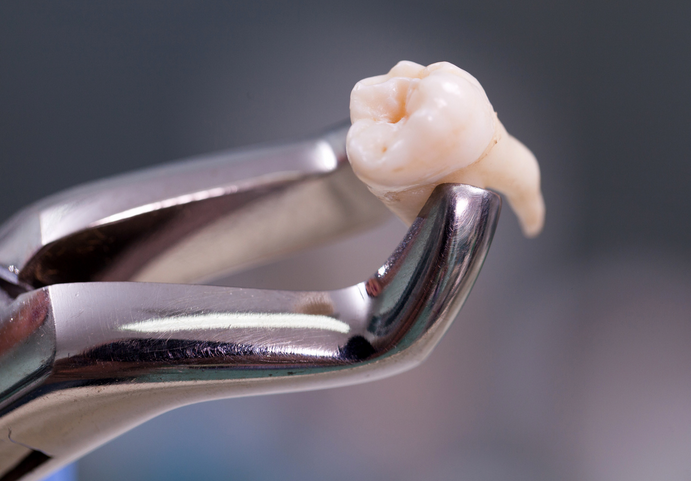Did your tooth fall out when you fell, got hit in the teeth, or for other reasons?
Tooth loss is one of the most preventable health problems we can encounter. However, physical injuries and trauma can knock a tooth out of place. You may also lose a tooth from other causes, like gum disease.
Sometimes, you still lose a tooth, no matter how well you take care of your teeth and watch your surroundings. Now, what do you do when a tooth falls out? Continue below to learn how to respond to sudden tooth loss caused by trauma or other issues.
1. Retrieve or Recover the Fallen Tooth
Let’s say you got hit in the mouth or hit your face against a wall. After a few seconds of recovery, you realize you’re missing a tooth. In any scenario, the first thing you should do is retrieve the tooth that fell out.
When you pick up a tooth, you should hold it by the crown or the top part. Never grab the tooth by its root. Otherwise, you may damage the nerves at the end of the tooth.
What to Do if You Can’t Find the Tooth
What if you can’t find the tooth no matter how hard you look? If this happens, there’s a chance that you might have swallowed it.
Getting an X-ray is the best way to be sure of this. The good news is that nothing terrible happens to most people who swallow teeth. You’ll most likely excrete it out of your body like other things you consume.
Yet, a small percentage of foreign objects you swallow may enter the airways into the lungs. If this happens to you, get medical help when you have trouble swallowing or have pain in the neck, chest, or abdomen. You may also experience fever, drooling, vomiting, bloody stool, or bloody vomit.
2. Stop the Bleeding
The next step is to keep the socket from bleeding out. Get dry, clean cotton balls on the open wound to absorb the blood. Place your finger on the cotton ball and apply gentle pressure on it.
Make sure you have plenty of dry and clean cotton balls. When the cotton ball in your mouth becomes too soggy with blood and saliva, replace it with a new one. Keep replacing it to encourage blood clotting.
Don’t forget to rinse your mouth with clean water in between cotton ball replacements. Don’t swallow the blood that came from losing teeth. Doing so may cause vomiting, which can affect your open wound.
3. Clean the Tooth
Look for water or milk to clean or rinse the tooth with while you wait for the bleeding to stop. When you’re washing the tooth, avoid wiping or scrubbing it. Be gentle when you rinse dirt off the root and crown.
You can also use a saline solution, like nasal lavage or eye drop solution. However, make sure the saline solution you’re using is sterile. Water, milk, and saline solution are enough to kill germs and prevent infection.
Also, avoid using soap, alcohol, or any other cleaning products. They could affect and kill the tissue that’s vital for reattachment.
4. Place the Fallen Tooth Back in the Socket
You’ve already cleaned your tooth and stopped the bleeding. Now, put the tooth back into its socket or hollow. It is how you protect the tooth’s root, vital tissues, and open wound.
Grab medical gauze or some other type of soft and clean fabric. Bite onto the gauze or washcloth. Biting down puts pressure on the tooth, which will keep it stable.
Don’t bite down too much on the gauze. Gentle pressure is enough to keep your tooth in place. Calm yourself while you go to the dentist or hospital to prevent a hard bite.
5. Keep the Tooth if You Can’t Place It Back in Its Socket
If you can’t place the tooth back, preserve it instead. You can put it in a saline solution or glass of milk in a small bottle or cup. You can also place the tooth in a saline solution.
You can also place the tooth between your gum and cheek to keep it secure.
Avoid placing the tooth in water to preserve it when you lose a tooth. Dipping a fallen tooth in water will not preserve it.
6. Visit Your Dentist or Go to the Emergency Room Right Away
Finally, call or send a message to your dentist within the next one or two hours. Let him know about the fallen or lost tooth. You can also head straight to the clinic if you know your dentist will be on duty.
Your dentist will perform immediate treatment for the tooth. The less time passes between your dentist’s visit and the tooth loss, the more likely you’ll save the tooth. Visit the emergency room if you can’t get to your dentist in time.
Don’t wait a few hours or days before getting dental help. Otherwise, your socket wound will heal, and it’ll be impossible to reattach the tooth. They can also address infections and provide professional care.
Sometimes, your dentist will advise against tooth reattachment. A likely cause is decay, infections, or other complications. Instead, he’ll tell you about the various tooth replacement options.
Some tooth replacement options include dentures and implants. If you want the best implants, start with these snap on dentures near me.
7. Reasons You May Lose a Tooth
Getting your tooth knocked out is a way to have it fall out of its socket. It may involve something hitting your mouth. It usually happens with contact sports like American football, hockey, or boxing.
Your tooth may also become loose and fall out because of gum disease. Gum or periodontal disease affects two in five adults aged 30 and older in the US. Correct oral health care is the best way to prevent gum disease and strengthen your teeth.
Prevent Losing Your Tooth by Acting Fast
Now, you know what to do when you lose a tooth. As we said, don’t wait long to get your tooth to a dentist or the emergency room. Otherwise, you’d have to get tooth replacements instead.
Did you find this article informative? Check out our other blog posts for other knowledgeable and helpful content. We have guides on lifestyle, fitness, fashion, travel, and more.









